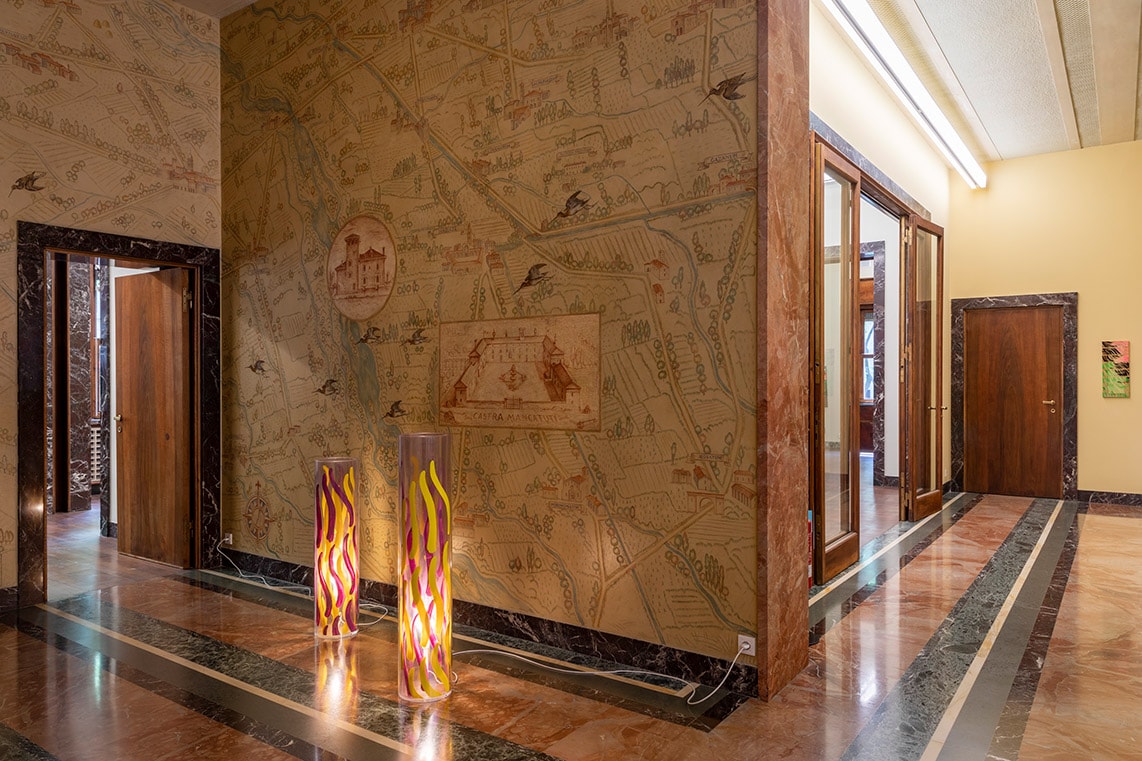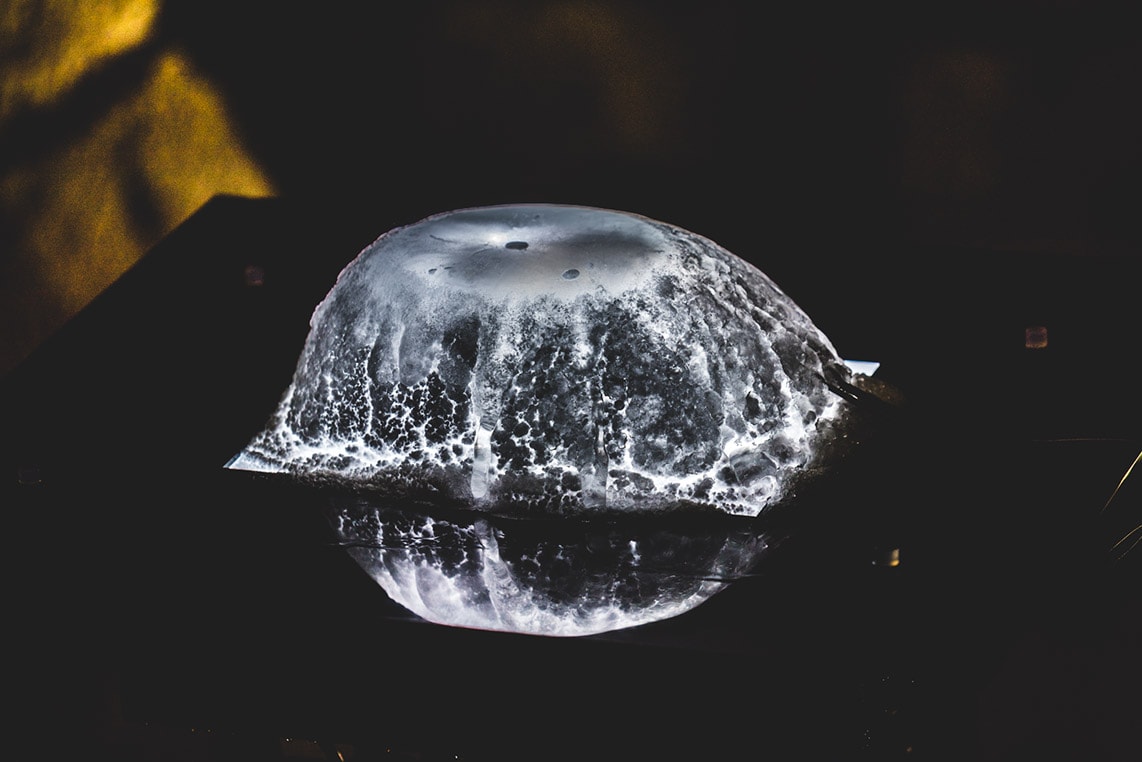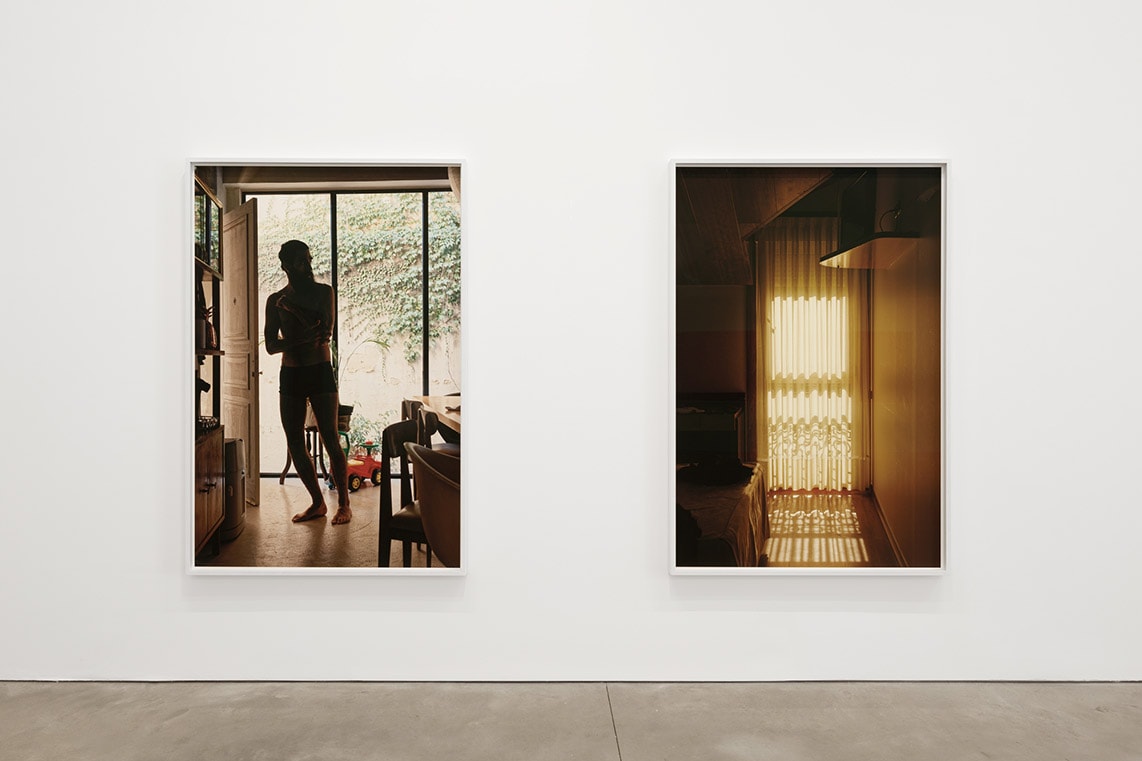José Pedro Cortes’ work is the consequence of a close and attentive observation of the places he photographs, as a way of enabling their existence and transforming them into images that amplify visual perceptions of time (and space).
Corpo Capital, his most recent exhibition, at Galeria Francisco Fino, is still based on place – geographical, corporeal and constructed –, which exists in the encounter between opportunity and availability, emphasised by the marks of a time that is running out. More than a staging, the action and moment are premeditated: as if he were sharing now what he has seen before.
The experiences in the representation of place mark all of Cortes’ work, not being limited by the context: they emerge from it. In some of the books he has published through Pierre von Kleist Editions, like Silence, Costa or Things Here and Things Still to Come, the geographical framework is a visual strategy, creating entry points into the work to then reinforce and introduce latent issues in those places, less obvious or potential.
In Realismo Necessário, an exhibition at MNAC (2018), Cortes justifies his practice in relation to his interests and his relationship with art history. He continues some of these editorial strategies through a group of images that increase speculation by fragmenting photographic series, to which he adds images from other times/series that complement ideas and relationships. In them, the mixture and symmetry of times and spaces lead us to disruptive and apparently dispersed realities. The limit between the spontaneous and the staged is observable in the portraits and photographed subjects, where there is a performative side that goes beyond the form, movement and body’s position/pose, which gradually moves towards abstraction through the close-up, until it is suspended.
More than memory, the process of recontextualisation is interested in the possibility of the image being renewed over time, and of fragmentation as a strategy for new understandings, readings and associations. He often uses his archive and image bank to establish unusual or unpredictable connections, through which he creates intersections between subjects, establishing a discursive fluidity between the different works.
Corpo Capital continues these wanderings, this time from a perspective that demands proximity, putting us in the most intimate role of a voyeur. The image that opens the exhibition, Shirt (2020), confirms that there is always more to see. We see it up close, from the inside. An image in gravity that shows the space between the body and the world.
The title Capital Body indicates a centrality that moves around a domestic perimeter, a likely result of the lockdown that reinforces the need for closeness. The concentration and editing of the photograph potentiate a (more) attentive analysis of the environments, their contours and tensions that exist in the banality of everyday life, of details, of bodies and nature. We see the fragility and vulnerability of time in the still lifes of Nature I and Nature II; in the presence of the body (or its parts) trapped in a movement (Muscles, Foot and Nails); or in the fragile and temporary architectures of scaffolding and plastics (Plastic Door, Structure). Make This Your Home – a new series of digital compositions manipulated from aspirational estate agency advertisements – adds the word to the exhibition and translates some conflicts without compromising other interpretations. As a whole, the exhibition shows an imperfect realism that builds a «shared narrative that acknowledges time, its places, its objects, its people».[1]
As usual with Cortes, the images are raw and cinematic, with different scales related by dispersion and association, where the viewer’s perspective is essential to build connections and pathways. There is a rhythm to the installation of the works, extending the singularity of every image. The editing of the space is reminiscent of a book pagination, where the work’s aesthetic experience is thought of as a whole. We feel that attention is given to the organisation and installation of the works, imposing a free reading pace, albeit focused on the context, where cohesion and balance are noted in the same manner.
José Pedro Cortes observes the banal, mundane or invisible reality around us. He ventures into a continuous investigation of the image and photography between the limits of superficiality and the documentation of time/moment. Laurie Anderson (whom the artist has referred to in the past) tells us that «between thought and expression lies a lifetime». In Corpo Capital, Cortes shows us that there is a time full of life that needs to be seen.
Corpo Capital, by José Pedro Cortes, is at Galeria Francisco Fino, in Lisbon, until July 24.
[1] According to the exhibition text, available at Galeria Francisco Fino.
Jesse James wrote this text as part of the Postgraduate Course in Art Curatorship at the Faculty of Social Sciences and Humanities of the Nova University of Lisbon, with which Umbigo has been working on a collaborative project.


